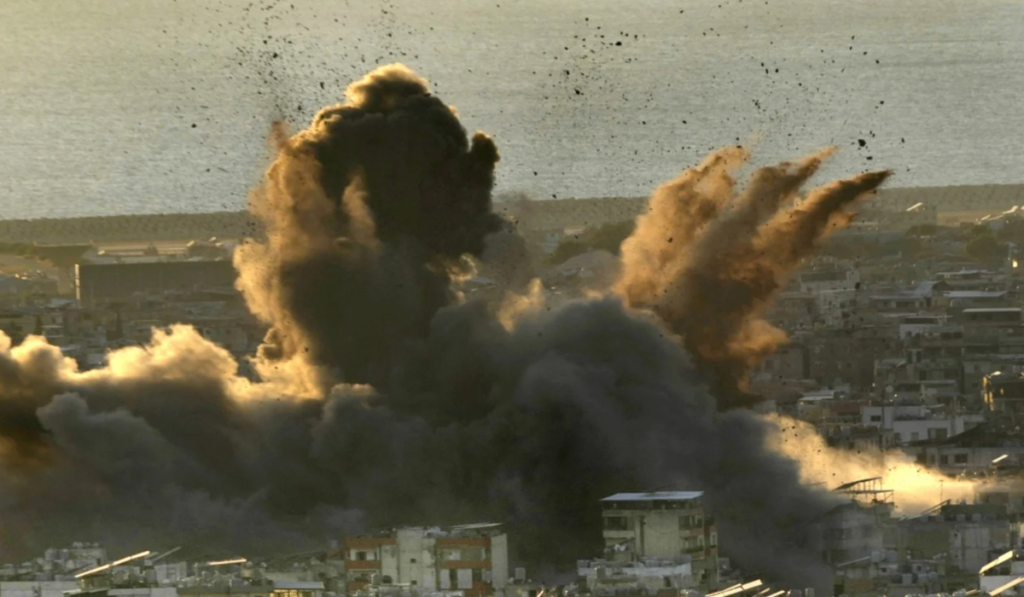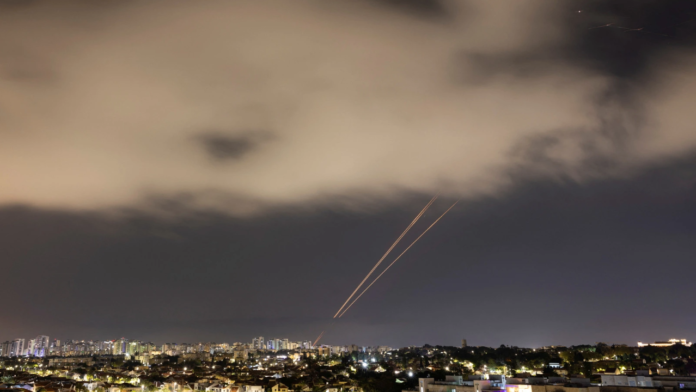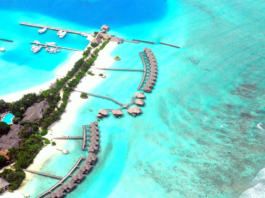“Iranian state news reported Israel’s first wave of strikes around 2:15 a.m. Saturday, targeting sites west of Tehran. Explosions were followed by two additional attack waves, escalating tensions in the Israel-Iran conflict.”
Israel’s Attack on Iran Sparks Global Attention
In a dramatic escalation, Israel launched airstrikes on Iranian military sites as part of a “wave of retaliatory attacks.” These targeted assaults, which included missile manufacturing facilities, come amid growing tensions with Iranian-supported militant groups. This incident has drawn global scrutiny, raising questions about what triggered Israel’s attack on Iran and its broader implications.
What Led to Israel’s Attack on Iran?
The current crisis traces back to an event in early October when Iran allegedly launched around 200 ballistic missiles toward Israel. This incident was a response to the assassination of Hezbollah leader Hassan Nasrallah and other high-profile figures, actions Iran attributes to opponents. With tensions mounting, Israel launched a ground offensive in Lebanon to counter Hezbollah’s influence, viewing it as a proxy of Iran. This chain of events set the stage for the recent escalation, culminating in the attack on Iran.
The Sequence of Events: Waves of Attacks on Iranian Military Sites
According to the Iranian state news, the first wave of strikes began around 2:15 a.m. on Saturday. Explosions shook areas west of Tehran, with videos posted online showing flames illuminating the night sky. These initial attacks were quickly followed by a second and third wave, completing the planned operations in Iran.

Israel’s Response: “Mission Accomplished” with Further Warnings
Israel declared the mission a success, stating it had conducted “targeted and precise attacks” on military sites in Iran that posed “immediate threats” to its security. Rear Admiral Daniel Hagari, representing the contry, warned that any further provocations from Iran would prompt a swift response.
Opposition leader Yair Lapid also showed support, emphasizing that Israel “can and must impose a heavy cost on Iran.” This statement underscores its commitment to counter Iran’s influence in the region, particularly regarding support for groups like Hezbollah.
Iran’s Reaction: Condemnation and Assertion of Self-Defense
Following airstrikes, Iran’s Foreign Ministry condemned the actions as a violation of international law, asserting Iran’s right to defend itself. Iran vowed to respond as it deems necessary, signaling that the attack could lead to a prolonged period of heightened tension.
Iranian officials sought to minimize the perceived impact of the attack, claiming that their air defenses intercepted portions of the assault. Iranian sources indicated that the attacks were confined to Tehran, Ilam, and Khuzestan provinces, where defensive measures reportedly limited damage. Reports state that two Iranian soldiers lost their lives, though details remain scarce.
U.S. Stance: Support for Israel’s “Self-Defense” Efforts
The United States has classified Israel’s actions as a legitimate exercise of “self-defense.” A senior U.S. official indicated that President Joe Biden had recently encouraged Prime Minister Benjamin Netanyahu to take measures to prevent future threats. Sources report that this guidance included developing a strategy to avoid civilian casualties, emphasizing that the attacks were “focused entirely on military targets.”
Strategic Implications of Israel’s Attack on Iran
1. Regional Power Struggle Intensifies
The attack on Iran highlights the ongoing regional power struggle. As Iran’s influence extends across Lebanon, Syria, and Gaza, Israel’s military response reflects its perception of Iran as an increasing threat. This incident could further fuel proxy conflicts in the region, involving more players and heightening instability.
2. Israel-Iran Relations at a Breaking Point
The decision to strike Iranian military sites reflects its strategy to prevent future attacks. However, Iran’s pledge to retaliate suggests that these attacks could signal the start of a longer conflict. Should Iran respond, continued tit-for-tat responses could destabilize not only both countries but also neighboring nations with vested interests.
3. Impact on Global Diplomacy and Security
Recent airstrikes will likely have far-reaching effects on international relations. Countries with regional interests, including the U.S., Russia, and EU nations, will need to tread carefully. The U.S.’s endorsement of Israel’s right to “self-defense” may strain its relationships with allies advocating for diplomatic solutions.
The Human Cost: Collateral Damage and Civilian Concerns
While Israel asserts that its strikes were limited to military targets, questions remain about potential collateral damage. Iran has yet to disclose the full extent of any harm, though reports suggest civilian areas near Tehran may have been impacted. As the region braces for potential retaliation, civilians on both sides face growing uncertainty and concerns over further escalation.
Conclusion: What Lies Ahead?
The attack on Iran has sent shockwaves globally. With both nations holding firm, the potential for more severe confrontations looms. Its primary goal is clear: diminish Iran’s military presence to prevent future threats. For Iran, the priority remains to assert its right to self-defense and strengthen its regional influence.
As the global community watches, it’s evident that Israel’s attack on Iran marks a critical turning point. Diplomats may intensify efforts to mediate, but the situation remains precarious. The ripple effects of Israel’s actions are likely to be felt far beyond the Middle East.



